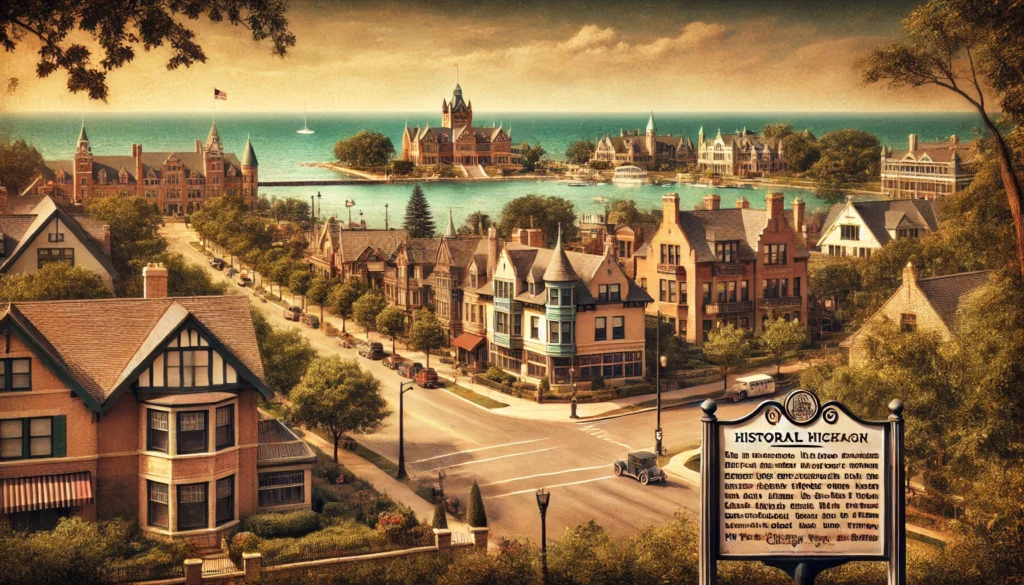Lake Forest, Illinois, holds a fascinating history that stretches back to the early 19th century, marked by its deep roots in Native American culture, its educational and architectural significance, and its growth into a prominent suburban community. But what makes Lake Forest’s past so unique, and why does it still captivate residents and visitors alike today? Let’s explore the rich historical journey of Lake Forest, Illinois.

Early Settlement: Native American Roots to European Arrival
Before European settlers arrived, the land that is now Lake Forest was home to Native American tribes, particularly the Potawatomi people. Their presence was strong in the region, with Lake Forest’s rich woodlands and lakes providing an ideal habitat for sustaining their communities. It wasn’t until the 1830s when European settlers began to make their way to the region, bringing with them new cultural and societal changes that would shape the future of Lake Forest.
In 1857, a group of visionary Chicago businessmen established the Lake Forest Association with the goal of developing the area into a suburban retreat. This early vision laid the foundation for the city’s affluent and nature-conscious character that remains evident today.
The Role of Lake Forest College in the City’s Growth
One of the key moments in the development of Lake Forest was the founding of Lake Forest College in 1857. The establishment of this educational institution attracted scholars, professors, and students, further solidifying the area’s reputation as a hub for learning and growth. Over time, Lake Forest College became a cultural and intellectual cornerstone for the community, driving forward both the educational and social expansion of the town.
Architectural Heritage: A Showcase of Design Excellence
Lake Forest’s architecture stands as a testament to the city’s luxurious past and commitment to preserving historical beauty. Some of America’s most notable architects left their mark on Lake Forest in the late 19th and early 20th centuries. Renowned architects like David Adler, Howard Van Doren Shaw, and Frederick Law Olmsted designed magnificent homes, estates, and public buildings that still line the streets today. From sprawling mansions to intricate public spaces, Lake Forest has become synonymous with elegance and architectural grandeur.
This heritage has been fiercely protected over the years, with many local organizations and preservation efforts ensuring that these landmarks remain intact for future generations. Walking through Lake Forest feels like stepping back in time, with its carefully maintained estates standing as symbols of the city’s illustrious past.
From a Summer Retreat to a Year-Round Haven
Initially developed as a summer resort for Chicago’s elite, Lake Forest gradually transformed into a thriving year-round residential community throughout the 20th century. This transition marked the city’s steady growth, and while it expanded, Lake Forest remained committed to preserving its natural surroundings. Parks, forests, and nature reserves were established to maintain the area’s serene beauty, offering residents and visitors the opportunity to enjoy peaceful outdoor spaces.
Notable Residents and Institutions: Lake Forest’s Legacy
Lake Forest has long been a home for influential figures in American business, philanthropy, and politics. Its prestigious institutions, like the Lake Forest Academy and Lake Forest Library, are key pieces of the city’s legacy. The Lake Forest Academy continues to be a leading college-preparatory school, while the Lake Forest Library holds historical collections that offer a glimpse into the town’s past.
These institutions not only serve the educational and cultural needs of the community but also act as stewards of the city’s history. Lake Forest’s commitment to preserving its cultural and architectural history is evident through various historical preservation organizations actively working to protect the city’s identity.
Modern Lake Forest: A Thriving and Preserved Community
Today, Lake Forest stands as a unique blend of historical preservation and modern living. Known for its scenic residential areas, well-regarded educational institutions, and well-preserved natural landscapes, the city has maintained its reputation as one of the most affluent and desirable suburban communities in the region.
The efforts to protect its architectural treasures and community character ensure that Lake Forest’s history will continue to be celebrated for generations to come. Whether you’re exploring its grand estates, walking through its nature reserves, or learning about its storied past, Lake Forest offers a fascinating look at the balance between progress and preservation.
Conclusion
Lake Forest’s rich history of early settlements, educational growth, architectural excellence, and preservation efforts all contribute to its standing as a vibrant, thriving community. Its past is not just a story of bygone eras but an integral part of the town’s modern identity. With a continued emphasis on preserving its heritage, Lake Forest remains a unique and historically significant suburb that captivates those who visit or call it home.
So next time you find yourself in Lake Forest, take a moment to reflect on the rich history that surrounds you—it’s a story that continues to shape the town’s character and charm to this day.
